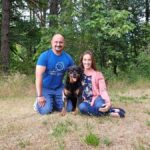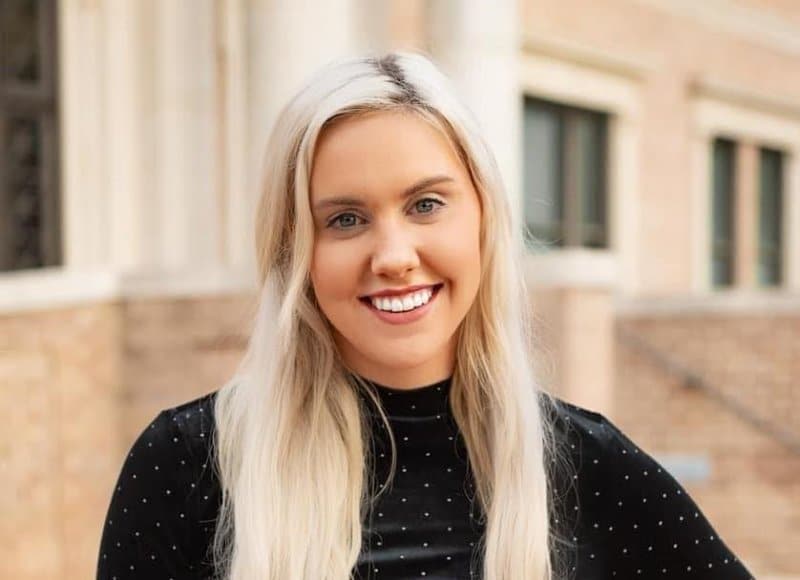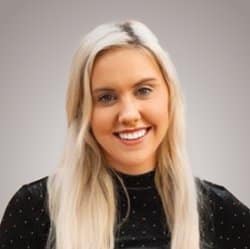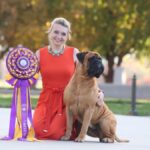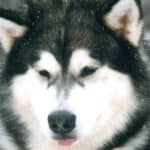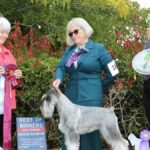A Day in the Life of a Handler’s Assistant
In the public eye, dog shows are seen as a glamorous sport in which top-quality dogs have a chance to shine in something that appears to the average person as something of a televised canine beauty pageant.
But there’s a lot more than it may seem that goes into those two minutes of glory that a dog gets on TV. There’s timeless effort, dedication, and daily hours of hard work put in by the handler that go on behind the scenes.
And the work that’s done for an individual dog that may catch your eye on TV during the Westminster Kennel Club Dog Show frequently extends beyond the person at the end of the lead. Enter people like Cassidy Crockett and Ann Claire Wilson, the assistants of Brian Livingston, one of the top handlers in the nation who has titled too many dogs to count and put numerous prestigious wins and Bests in Show on several of his clients’ dogs.
While Livingston handles a lot of the logistics, handles the dogs, and does a lot of preparatory work with them, the large string of sometimes roughly 30 dogs showing and traveling can’t all be handled by one person. So, Cassidy and Ann Claire, who live on the property, spend a lot of time each week in the kennel building caring for the dogs, running them on treadmills for conditioning, and training and grooming them.
At the shows, the two do a lot of the same and show the dogs who can’t be taken into the ring when their primary handler is showing another client’s dogs—something that can happen on a few occasions when multiple breeds are in the ring.
Such a job takes a high level of commitment that both Cassidy and Ann Claire have invested for about as long as they can remember.
“Working for Brian and Lori means so much to me. The trust they give me tells me I’m doing something right and on the right track,” Cassidy said. “It’s an everyday reminder that I’m working towards a goal and a level. I’ve learned so much it’s hard to even bundle it all up between handling, grooming, and management skills.”
Ann Claire, who has some of her own personal clients and breeding program now partnered with established German Shorthaired Pointer connoisseur Renee Lara in addition to being an assistant, has a similar view.
“It’s a lot of work. Not just physically but mentally,” Ann Claire said. Depending on who you work for, it’s fast-paced and not a lot of downtime. You’ve got to be good at time management and working quickly under pressure.”
I’ve learned so much it’s hard to even bundle it all up between handling, grooming, and management skills.
It’s a gig that truly never stops, unlike anything with a shift you can clock out of.
“You’re caring for the dogs in every capacity. Feeding, grooming, health checkups, exercise. Unpacking and repacking the vehicle on a weekly basis. Shopping for supplies. Keeping things running smoothly.”
Cassidy and Ann Claire have been in dogs since they were young—Cassidy was born into it with a family that had been doing it for decades, and Ann Claire got her start in an Obedience class that would later turn into a career.
“I took an Obedience class when I was five years old and the instructor bred and showed Am Staffs,” Ann Claire said. “She asked if I wanted to show one some time. The first judge I showed to was Dorothy Nickels who told me to come back when I was bigger than my dog.”
“And I haven’t quit since.”
While all of this over such a long period of time may sound to the average person like a lot to do in comparison to a normal hourly job that may bring in a similar amount of money with the ability to actually take time off the job, it’s worth it to those who truly love the sport with the goal of becoming a top handler themselves.
“Being an assistant is the most important thing to do before going on your own, and that’s something I could not be more emphatic about,” said Cassidy. “Every successful handler has started as an assistant. Over time you get more ring time and learn handling techniques, but I think being an assistant is learning everything that goes into handling outside the ring. Learning how to run the business itself and everything that comes with it.”
Being an assistant is the most important thing to do before going on your own, and that’s something I could not be more emphatic about
Ann Claire has worked her way up into more of an associate than a typical assistant, with a lot of her own connections, and has brought in personal business using the skills she’s learned helping a handler.
“I think that it is extremely important to work for a professional handler before going out on your own. I think that people see professionals running around with a dog and winning and think ‘how hard could it actually be?’ What you don’t see is the blood, sweat, and tears it took to get to the place to make it look so effortless. To have your dog in such good condition. This is a 24/7/365 job and it’s much more than the two minutes you’re in the ring showing your dog.”
While Cassidy and Ann Claire haven’t yet achieved the same type of glory and recognition that the AKC’s most successful handlers have just yet, they’ve factored into so much of it and are well on their way.
Ann Claire has helped breed some of the top Shorthairs in the nation with a goal of winning a Best in Show as a breeder/owner-handler, while Cassidy recently had a chance to hold the Red, White & Blue ribbon with her Smooth Collie, Jessie—a dog she put years of work into to achieve that goal.
“There’s no question that what I’m most proud of is my Best in Show,” Cassidy said. “As a little girl I always watched the big handlers win Bests in Show and dreamed of accomplishing that one day. To make it even sweeter, it was with my own family’s dog.”
While Cassidy hopes to one day go out on her own, the vision remains the same and one that she’ll take day by day in the life of an assistant—a job that isn’t given a ton of credit from the outside but is one of the most strenuous that exists in a world of many possible career paths.
“My short-term goal is to be the best assistant I can be, helping my handler to the best of my abilities and soaking in as much as possible. My long-term goal is to be the best handler I can be, giving my animals the best care possible, conditioning them the best way, having an amazing connection with my clients, and showing my dogs in a way that looks effortless and graceful.”
